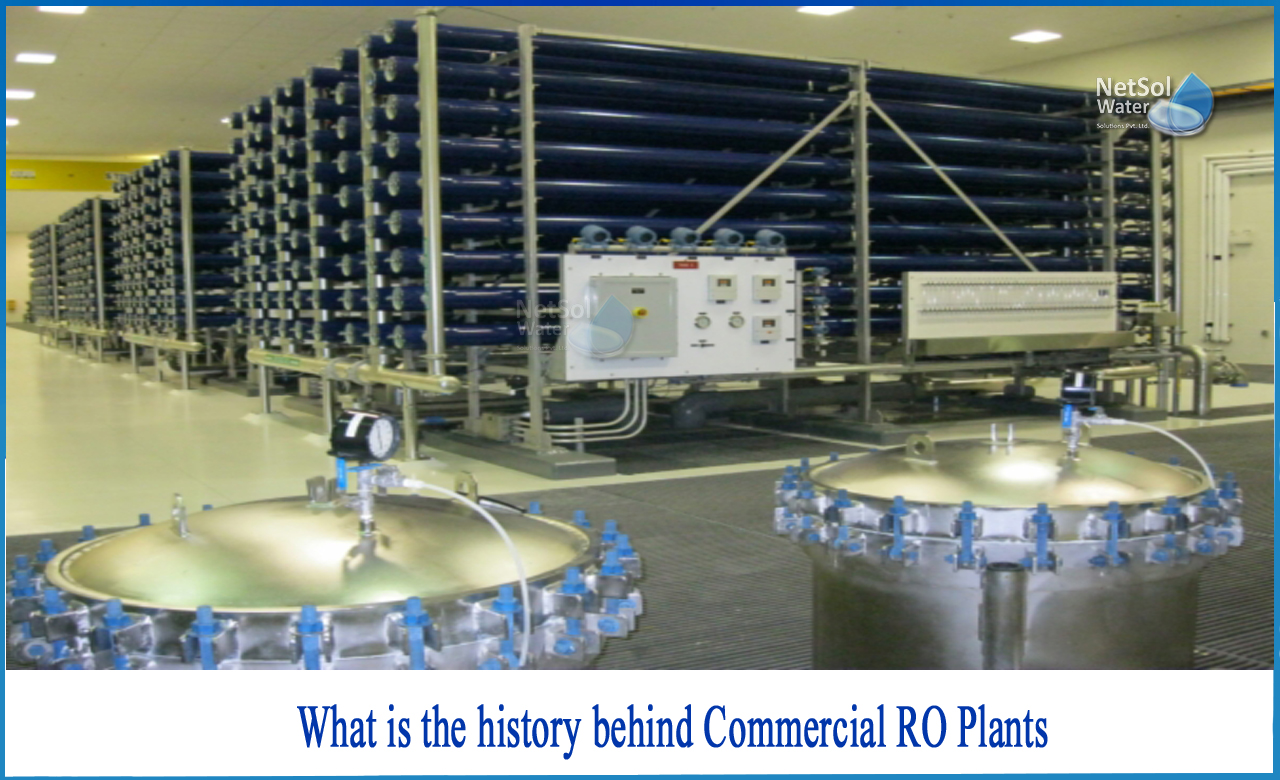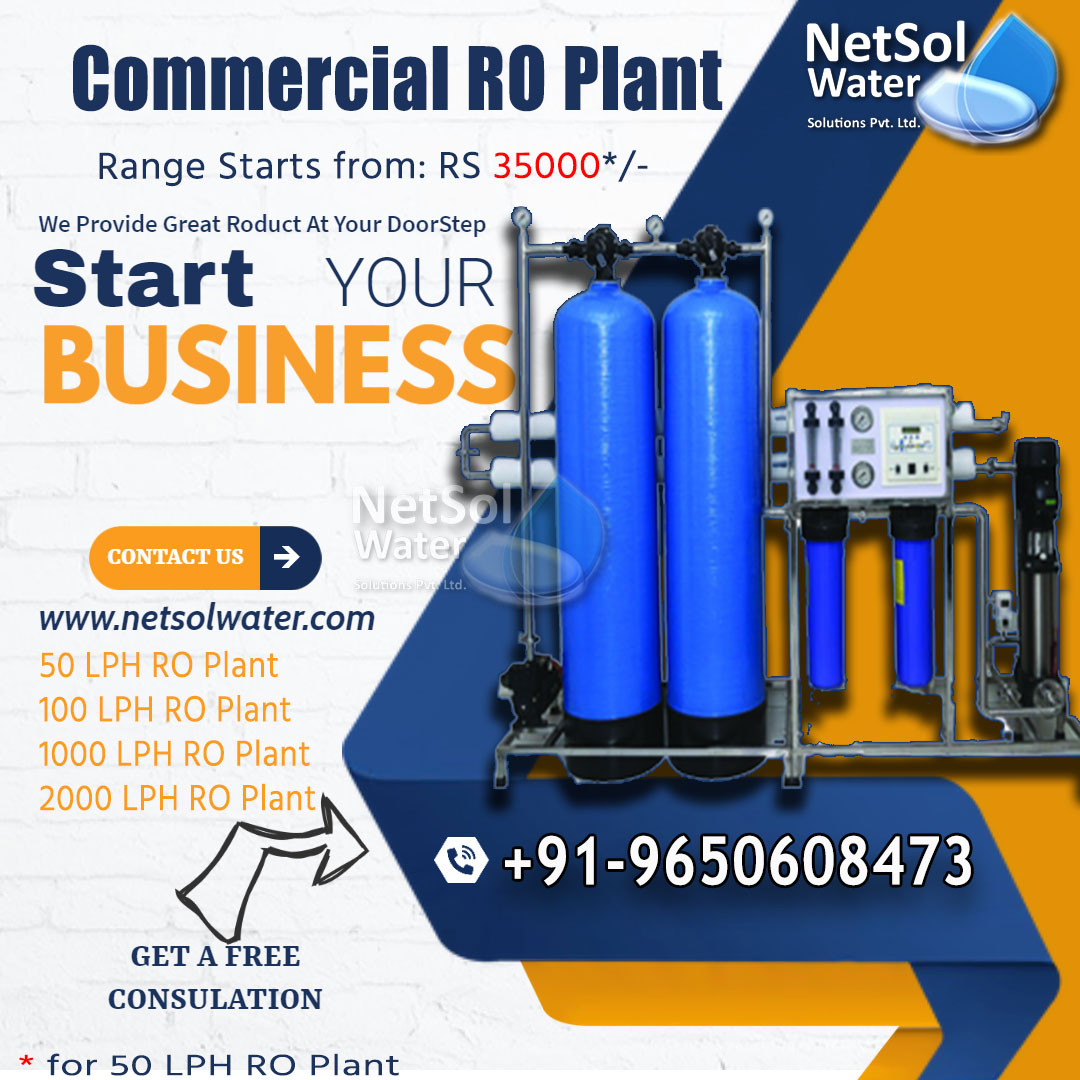What is Reverse Osmosis?
Reverse osmosis is the process of driving a solvent through a semipermeable membrane from an area of high solute concentration to a region of low solute concentration by exerting a pressure greater than the osmotic pressure. The separation of pure water from saltwater and other brackish fluids is the greatest and possibly most important use of reverse osmosis. Seawater, or brackish water, is pressed against one membrane surface, enabling salt-depleted water to be transported across the membrane and clean water to be created on the low-pressure side.
What is the history behind Commercial RO plants?
“Jean-Antoine Nollet” first discovered osmosis across semi-permeable membranes in a laboratory environment in 1748, using a pig's bladder as a membrane. He demonstrated that a solvent could preferentially flow through a semi-permeable membrane using natural osmotic pressure, and that the solvent would continue to enter through the cell membrane until dynamic equilibrium was attained on both sides of the bladder.
The Evolution of Reverse Osmosis
During the following 200 years, osmosis was exclusively detected in the laboratory. The University of California in Los Angeles was the first to use osmosis and semipermeable membranes to remove salt from seawater in 1949. In the mid-1950s, researchers from the University of California and the University of Florida succeeded in producing fresh water from saltwater; but, due to high flux, the product was not economically feasible. Interfacial polymerization of m-phenylenediamine and trimesoyl chloride was later found by John Cadotte of FilmTec Corporation to produce membranes with exceptionally high flux and low salt passage.
By 2001, there were approximately 15,000 desalination facilities in operation or planned across the world.With an initial operational capacity of 3 million gallons per day, Cape Coral, Florida became the first town in the United States to deploy reverse osmosis on a major scale in 1977. Cape Coral had the world's biggest low-pressure reverse-osmosis facility, capable of generating 15 million gallons per day, by 1985, thanks to the city's fast population expansion.
RO membranes for the future
Following the success of the first membrane chemistries, researchers turned their attention to the next generation of RO membranes, which would be able to handle a wider variety of operating conditions. John Cadotte of North Star Technologies (later FILMTEC) was one of these researchers who produced the first interfacial composite polyamide membrane in 1972. Compared to previously produced cellulose acetate membranes, this novel membrane had superior rejection and flux at lower working pressures.
History of Membrane Elements
The design of RO elements has developed over time to match the operating conditions of a growing number of desalination applications. Initial element designs worked, but there was still opportunity for the improvement.
Design of the first RO elements
In a plate-and-frame construction, the original Loeb-Sourirajan membrane was used in a flat sheet configuration. Because the membrane itself lacked mechanical integrity, it was mounted on plates and operated as a unit. When it came time to test at Coalinga, it was clear that the plate-and-frame design was both expensive and filled with problems. The membranes, for example, were difficult to secure in place, there were dead flow zones, and the equipment was difficult to operate.
The future of Reverse Osmosis
Desalination of water has become one of the most significant techniques of addressing global water shortages. While RO has been a huge success thus far, the technology is still evolving. Further advancements are still needed since RO is being utilized to treat a wider range of feed waters, including municipal and industrial wastewater effluents as well as other water sources.
Are you looking for the best Commercial RO Plant Manufacturers in India?
Netsol Water collaborates with a wide range of international organizations to tackle complicated Reverse Osmosis problems by strategically integrating modern treatment technology with practical solutions.
We are the market leaders in Commercial RO Plants, Industrial RO Plants, Sewage Treatment Plants, and Effluent Treatment Plants, thanks to our cutting-edge technology.We customize water treatment systems to meet customers' specific needs at a fair price. We offer completely automated and semi-automated systems.
RO Plants that we provide are made of chrome steel or stainless steel, which assures that the water system will last longer. Our Commercial RO plants can be placed in almost every institution including schools, universities, or malls, offices, hospitals, dental clinics, housing societies, apartment complexes, hostels, restaurants, hotels, caravan parks, camping sites and much more.




